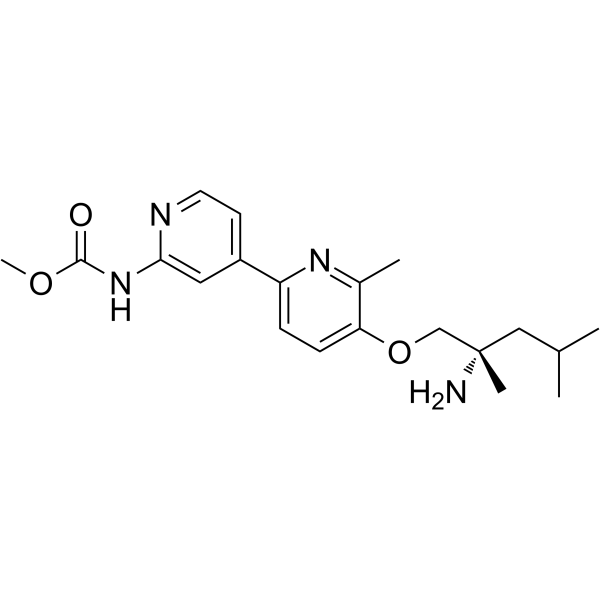| Description |
AAK1-IN-4 is a highly selective, CNS-penetrable, and orally active adaptor protein-2-associated kinase 1 (AAK1) inhibitor (AAK1 IC50 of 4.6 nM, Filt Ki of 0.9 nM, and cell IC50 of 8.6 nM). AAK1-IN-4 has the potential for the research for neuropathic pain[1].
|
| Related Catalog |
|
| Target |
IC50: 4.6 nM (AAK1)[1]. Ki: 0.9 nM (AAK1)[1]
|
| In Vitro |
AAK1-IN-4 (compound 43) (0.5 μM, 0-10 min) has good cell potencies of 2.4 in liver microsomes, as well as good metabolic stability (value of 95, 95, 93 for human, rat, and mouse microsomes, respectively) and no issue with CYP inhibitions[1].
|
| In Vivo |
AAK1-IN-4 (3 mg/kg; p.o; single) can significantly reduce tactile allodynia with close to 80% inhibition of the pain response in the rat CCI-induced pain model[1]. AAK1-IN-4 (3 mg/kg; p.o; 0-7.5 hours) has good spinal cord penetration and spinal-cord-to-plasma-concentration ratios of 8.8[1]. AAK1-IN-4 (1-10 mg/kg; p.o.; 0-24.5 hours) can significantly reduces mechanical allodynia with over 80% peak inhibition of the pain response achieved at an oral dose of 10 mg/kg, and over 60% peak inhibition of the pain response at 3 mg/kg[1]. Animal Model: Male Sprague-Dawley rats (chronic constriction injury, CCI)[1] Dosage: 3 mg/kg Administration: p.o, 0-7.5 hours Result: Significantly reduced tactile allodynia with close to 80% inhibition of the pain response, as well as showed good spinal cord penetration and spinal-cord-to-plasma-concentration ratios of 8.8. Animal Model: Male Sprague-Dawley rats (STZ-induced diabetic peripheral neuropathic pain, DPNP) [1] Dosage: 1-10 mg/kg Administration: p.o., 0-24.5 hours Result: Significantly reduced mechanical allodynia with over 80% peak inhibition of the pain response achieved at an oral dose of 10 mg/kg, and over 60% peak inhibition of the pain response at 3 mg/kg.
|
| References |
[1]. Luo G, et al. Discovery and Optimization of Biaryl Alkyl Ethers as a Novel Class of Highly Selective, CNS-Penetrable, and Orally Active Adaptor Protein-2-Associated Kinase 1 (AAK1) Inhibitors for the Potential Treatment of Neuropathic Pain. J Med Chem. 2022;65(6):4534-4564.
|
